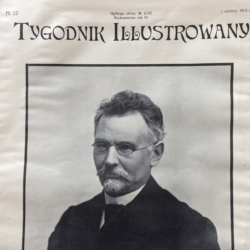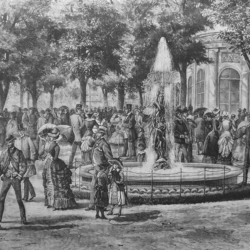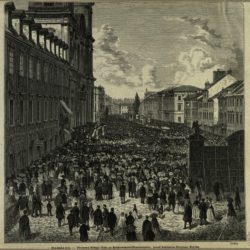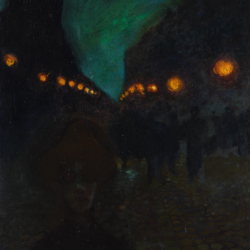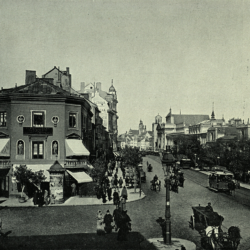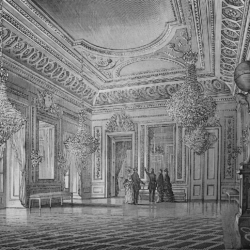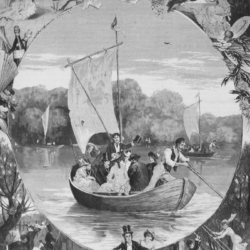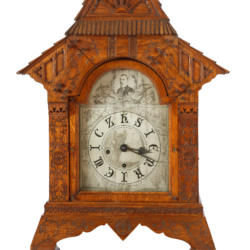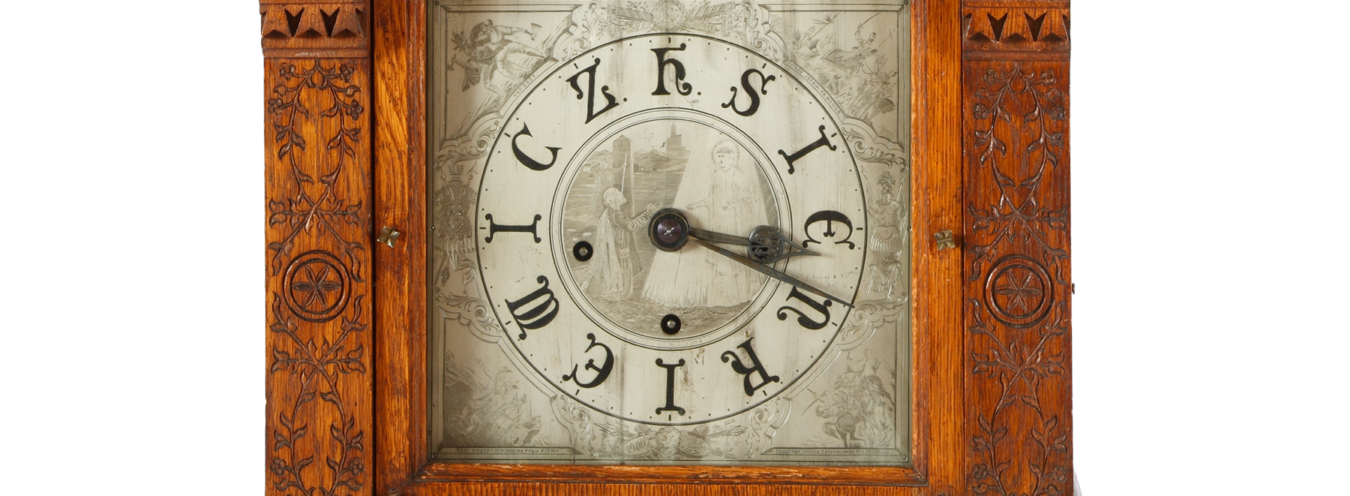
EN-Czas miejski
But is the world from Sienkiewicz’s columns based on the dichotomy between space and society? At first glance, it seems to be the picture of the period, frozen in time, the “present moment,” “current moment.” This pause, however, is only apparent, as the writer repeatedly underlines the passage of time, and highlights the changes in customs. In the columns, the emphasis is on the dynamics of everyday life (transformations visible over the course of several years), but also on changes in a wider timeframe. When writing about the sale of the manor house in Wiśniowiec and about the auction of a collection of historical memorabilia, a gallery of paintings and a valuable library, as well as about the plan to adapt the Wiśniowiecki Palace into a factory, Sienkiewicz states: “Times have changed. For the better? Depends who you ask […].”[1] Reaching back to the past is often based on a palimpsest structure, recalling the history of old customs and contexts, or formulas such as a “long, long time ago,” describing practices from years ago, finally analyzing the present state. Reaching to the experience from the past emphasizes changes visible within the same phenomena that determine the mental dimension of the city. This is accurately illustrated, for example, by Sienkiewicz’s excellent column from June 30, 1875, in which, firstly, the time axis is activated – the literary image of the past (beliefs in pagan gods, evil spirits, and ferns), then the description of contemporary celebrations appears (nymph-like elegant young bachelorettes in Saski Garden are also tempting, but young men are less susceptible: “people have strangely gotten wiser, they are not easily deluded with songs; they need dowry”). The text finishes with highlighting the difference between Warsaw’s celebrations of summer solstice (the so-called Wianki [wreaths]) two years earlier, which were attended also by upper classes, and the festivities in 1875, in which only carpenters participated, while a group of people gathered on a bridge did not understand the tradition, considering a visit to a restaurant to be the main goal of the celebration. St. John’s Day is, above all, the date of paying installments in associations, settling bills of exchange, the time when one receives lawsuits and advice notes from industrial funds, bank reminders, etc. Sienkiewicz wrote: “This is not how it used to be at illo tempore, says an old-fashioned song, and it is very right. Times have changed; old customs are slowly going away, dissolving in the waves of oblivion, disappearing, and the distance and difference between the past and the present are constantly growing.”[2]
The life cycle of the city is in a sense defined by the calendar year (“Theater, lectures, concerts are still quite popular in the winter season”[3]) and by the liturgical year, just like in the pages of Władysław Reymont’s Chłopi (The Peasants). Cultural events, from charity collections to fairs and mass entertainments, are closely related to the periods of Christmas and Easter celebrations as well as other religious festivals (carnival, Lent, St. John’s Day, etc.). The relation between politics and religion is not without significance here (Catholicism, connected with the attitude glorifying independence, is opposed to the elevation of the Orthodox Church as an expression of the invader’s policy). Ultimately, the rhythm of life is connected both with the religious sphere and with the realities characteristic of specific seasons. The space of the theater is a very important element determining the hierarchy of places in Warsaw, but – paradoxically again – it is the climatic conditions that influence the plan of cultural events associated with a given place. This translates into periodic habits and rituals. For example, during Lent, there are “lectures that are not listened to, banquets that are yawned at, and concerts that are not attended,”[4] while summer is the “season of heat and dust, common fainting, common idleness, and drowsiness” [5]. Summer brings “such a lot of different kinds of entertainment that it is hard to choose”; it is “an open-air carnival” (summer theaters arrive in the city). However, due to the problems with epidemics, dust, the need for disinfection, and numerous fires, “social life moves to the countryside in summer. In winter, however, it is the time for the city; at that time, it buzzes and bubbles with life to the brim.”[6]
In summer, the residents of Warsaw move to their homes on the outskirts of the city – to Sielce, Mokotów, Wilanów, Grodzisk, Jeziorna (they commute there, among others, on crowded trains, for which it is customary to “accommodate twice as many people in each carriage” and “lay passengers in layers”[7]). This juxtaposition of the countryside and the city is a permanent element of Sienkiewicz’s narration.
Przypisy
- H. Sienkiewicz, Dzieła [Collected Works], vol. 47, p. 27.
- H. Sienkiewicz, Dzieła [Collected Works], vol. 49, p. 9.
- H. Sienkiewicz, Dzieła [Collected Works], vol. 47, p. 45.
- H. Sienkiewicz, Dzieła [Collected Works], vol. 47, p. 13.
- H. Sienkiewicz, Dzieła [Collected Works], vol. 48, p. 177.
- H. Sienkiewicz, Dzieła [Collected Works], vol. 47, p. 13.
- H. Sienkiewicz, Dzieła [Collected Works], vol. 49, p. 105.

